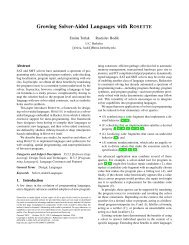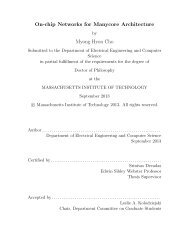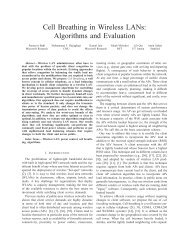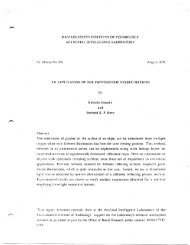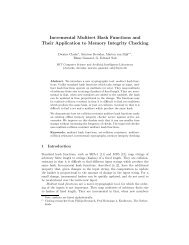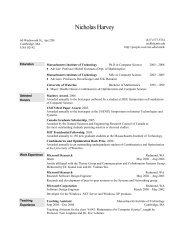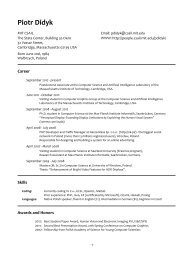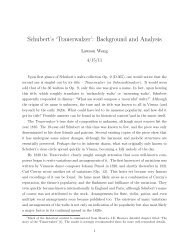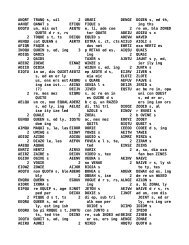Prism User's Guide - CSAIL People - MIT
Prism User's Guide - CSAIL People - MIT
Prism User's Guide - CSAIL People - MIT
Create successful ePaper yourself
Turn your PDF publications into a flip-book with our unique Google optimized e-Paper software.
102<br />
allows you to zero in on the lines that have the greatest impact on a program's<br />
performance.<br />
To determine why a procedure or a source line is a bottleneck in your program,<br />
<strong>Prism</strong> provides data on a program's use of several different computing resources,<br />
not just CPU time. For example, the code may be doing a lot of send/get communication<br />
or /O. Providing data on the code's use of these resources makes it<br />
easier to determine how, or if, the code's performance can be improved.<br />
<strong>Prism</strong> aggregates performance data separately for the front end (or partition manager)<br />
and for the CM (or the nodes); these are referred to as the serial subsystem<br />
and parallel subsystem, respectively. This is necessary because both subsystems<br />
contribute independently to a program's execution time.<br />
In addition to displaying the data, <strong>Prism</strong> provides a performance advisor that<br />
gives an interpretation of the data. See Section 6.6.2 for more information on it.<br />
6.2 Writing and Compiling Your Program<br />
Performance data is available for C* and CM Fortran programs. To collect performance<br />
data, you must compile your program with the -cmprof ile option.<br />
Don't use the -oo option to turn off optimization for a CM-2/200 C* program.<br />
If your program calls an individual routine not compiled with the -cqprofile<br />
option (such as a routine from a CM library like CMSSL), serial-subsystem data<br />
will be available for that routine, as well as summary data on use of the parallel<br />
subsystem. Specific information on parallel-subsystem resources will not be<br />
available. A routine not compiled with -cmprof ile cannot call a routine compiled<br />
with -cmprof ile.<br />
Performance data is available if you compile your CM Fortran or CM-5 C* program<br />
with the -cmsim option and run it on a Sun-4. The timings will effectively<br />
be those for a one-node CM-5.<br />
6.2.1 Including Timers within Your Program<br />
<strong>Prism</strong> User s <strong>Guide</strong><br />
<strong>Prism</strong> collects performance data using the CM timing utility; see the CM Fortran<br />
User s <strong>Guide</strong> or C* <strong>User's</strong> <strong>Guide</strong> for a description of this utility. By default,<br />
Version 1.2, March 1993<br />
Copyright 0 1993 Thinking Machines Corporation



